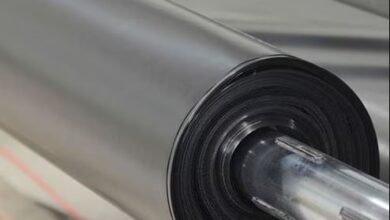What Are the Key Differences Between a Dip Pen and a Fountain Pen?

The world of writing instruments offers a wide variety of tools, but few are as classic and elegant as the dip pen and fountain pen. Both of these pens have deep historical roots, but they differ significantly in terms of structure, usage, and performance. Whether you’re an artist, calligrapher, or simply someone interested in unique writing instruments, understanding the contrasts between these two pens can be valuable. This article will explore the key differences between the dip pen vs fountain pen, including their history, design, ink mechanics, usage, and maintenance.
Historical Overview of Dip Pen and Fountain Pen
Dip Pen
The dip pen is an older instrument, with its origins dating back to ancient civilizations like the Egyptians and Romans. It became widely popular during the 17th and 18th centuries when metal nibs were first introduced. Dip pens were initially made from reeds or feathers (quills), with the quill dipped into ink and then used to write. Over time, quills were replaced with more durable metal nibs.
Dip pens were the dominant writing tool before the invention of the fountain pen. Their simplicity and the ability to produce delicate strokes made them favored by artists and calligraphers.
Fountain Pen
The fountain pen was a significant advancement in writing technology. Its invention in the 19th century allowed users to write for extended periods without constantly dipping the pen into ink. The fountain pen’s innovation lies in its self-contained ink reservoir, which gradually feeds ink to the nib through a capillary system. This advancement made writing more convenient, especially for professionals and scholars who required a reliable tool for long writing sessions.
By the 20th century, fountain pens became a status symbol for their craftsmanship, ease of use, and elegance. Today, they are still popular among enthusiasts and collectors.
Design and Structure: Comparing the Two Pens
Dip Pen Design
The dip pen consists of two main parts: the nib and the handle (or holder). The nib, typically made of metal, is detachable and can be replaced. The holder is often made of wood, plastic, or metal. Dip pens do not have an internal ink reservoir; instead, the user must manually dip the nib into an inkwell or container of ink.
The nib’s shape can vary, allowing for different writing styles. Calligraphers, for example, might use a flexible nib for ornate strokes, while artists may prefer a stiffer nib for detailed line work.
The simplicity of the dip pen allows for a high level of versatility. Various nibs can be used with the same holder, allowing for a range of effects from fine lines to broad strokes. However, this simplicity also means that the writer must frequently dip the pen into the ink to maintain a consistent ink flow.
Fountain Pen Design
A fountain pen, in contrast, has a much more complex design. It consists of four main parts: the nib, the feed, the ink reservoir (or cartridge), and the barrel. The nib is usually made from metal (steel, gold, or other alloys), and like a dip pen, it can vary in shape and size. However, fountain pens have a built-in feed system that connects the nib to the reservoir, allowing ink to flow consistently without needing to dip the pen.
Modern fountain pens use either disposable ink cartridges or refillable converters, which can be filled with bottled ink. The design ensures a continuous ink supply, allowing for a smoother writing experience over a longer period compared to dip pens.
Fountain pens also come in a variety of materials, from plastic to luxury metals and even celluloid. Their weight, balance, and aesthetics are part of their appeal for enthusiasts.
Ink Mechanisms: How Each Pen Utilizes Ink
Dip Pen Ink System
One of the key differences in the dip pen vs fountain pen comparison is the ink system. The dip pen lacks any internal mechanism for ink storage. Instead, the user dips the nib into an ink bottle, allowing the nib to hold enough ink for a few strokes before it requires another dip.
This design makes dip pens ideal for those who want full control over their ink, as different types and colors of ink can be swapped out easily. Artists and calligraphers often appreciate this flexibility. However, the need for frequent dipping can be cumbersome for extended writing tasks.
Dip pens work well with thicker inks, such as India ink or acrylic ink, which are not suitable for fountain pens due to their potential to clog the intricate feed system.
Fountain Pen Ink System
The fountain pen’s ink system is much more sophisticated. Most fountain pens use either an ink cartridge or a converter that can be filled with bottled ink. The ink is stored in an internal reservoir and flows through the feed to the nib as the pen is used. This ensures a consistent ink flow without the need for frequent dips.
One advantage of the fountain pen’s design is that it allows for more continuous writing without interruption. The downside is that fountain pens require specific inks—usually water-based fountain pen ink. Thicker, pigmented inks can damage the feed system.
Fountain pen ink comes in a wide range of colors and formulations, but the need for specialized ink limits the flexibility that the dip pen offers.
Writing Experience: How the Pens Differ in Usage
Dip Pen Writing
The writing experience of a dip pen is highly dependent on the nib and the ink used. Since dip pens have no internal feed system, the user must control the ink flow through the angle of the nib and the pressure applied. This can lead to unique and expressive strokes, which is why dip pens are favored for artistic purposes such as calligraphy, sketching, and illustration.
However, the need to frequently dip the nib into ink can interrupt the flow of writing, making dip pens less practical for lengthy writing tasks. The pen’s manual nature also requires more skill to control, which may present a learning curve for beginners.
Fountain Pen Writing
In contrast, the fountain pen offers a smoother, more continuous writing experience. The built-in ink reservoir and feed system provide a steady supply of ink to the nib, allowing for longer writing sessions without interruption.
The fountain pen’s nib is less dependent on the user’s angle and pressure, making it easier to use for everyday writing tasks. Fountain pens offer various nib sizes (fine, medium, broad), each catering to different writing styles, but the consistency in ink flow makes the fountain pen ideal for long-form writing, such as journaling or note-taking.
Maintenance and Durability: Which Pen Is Easier to Care For?
Dip Pen Maintenance
The dip pen is a low-maintenance tool. Since there are no internal mechanisms, cleaning is simple. After use, the nib should be wiped clean of ink to prevent corrosion, especially with metal nibs. The nibs can be replaced easily when they wear down or become damaged.
However, because dip pens require manual dipping, there’s always a chance of ink spills or smudges. The lack of a sealed system also means dip pens can be messier to use, especially for beginners.
Fountain Pen Maintenance
Fountain pens require more upkeep due to their complex design. Regular cleaning of the nib and feed system is necessary, especially when changing inks or if the pen hasn’t been used for a while. This process can be more involved than with dip pens, as the internal components must be flushed out to prevent ink buildup or clogging.
Fountain pens are also more prone to wear over time, especially if not properly maintained. However, the convenience of having a self-contained ink system makes them easier to use once properly cared for.
Fountain pens can last a lifetime if well maintained, with high-end models being passed down as heirlooms. Dip pens, in contrast, often have disposable nibs, meaning they may require frequent replacements, though the holder can last a long time.
Cost and Availability: Which Is More Affordable?
Dip Pen Cost
Dip pens are generally more affordable, especially since they consist of just a holder and replaceable nibs. Nibs are inexpensive and can be purchased in bulk, and the pen holder is typically low-cost unless it’s made from high-quality materials.
Ink for dip pens is also quite affordable, and users can experiment with various types of ink without worrying about damaging the pen. Overall, the initial investment for a dip pen is minimal.
Fountain Pen Cost
Fountain pens, on the other hand, can vary widely in price. While there are affordable fountain pens available, high-end models made from luxury materials or designed by renowned brands can be quite expensive. The cost of ink cartridges or bottled ink for fountain pens also adds to the overall expense.
Additionally, maintenance and care products, such as cleaning kits and pen cases, may increase the cost of ownership. However, given the longevity of a well-maintained fountain pen, it may be seen as a worthwhile investment for those who frequently write.
Conclusion: Choosing Between Dip Pen vs Fountain Pen
In the dip pen vs fountain pen debate, the choice ultimately comes down to personal preference and intended use.
- If you’re an artist or calligrapher looking for versatility and control over your strokes, the dip pen is a great choice. It allows for flexibility in nibs and ink types, though it requires frequent dipping and a certain level of skill to master.
- On the other hand, if you’re looking for a pen for everyday writing, journaling, or note-taking, the fountain pen’s continuous ink flow and convenience make it a more practical option. While fountain pens require more maintenance, their smooth writing experience and elegance make them a popular choice for professionals and enthusiasts alike.
Both pens offer a unique writing experience, and understanding the differences between them allows you to choose the tool that best fits your writing or artistic needs.





